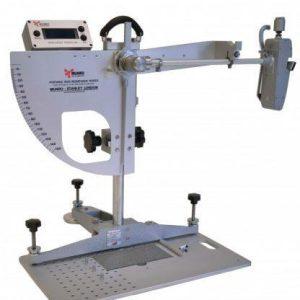In this tutorial, we will briefly outline the techniques that can be used to measure the slip resistance of stairs.
Using the Portable Skid Resistance Tester to Assess the Slip Resistance of Stairs
Given the size and shape of most stairs, it is rarely possible to test the slip resistance of each stair. It is recommended that the Portable Skid Resistance Tester is used to obtain Pendulum Test Values (PTV) at each landing (assuming these are made of the same material as the stairs). The test should be performed in the direction of travel in order to simulate pedestrian conditions.
Once the PTV of each landing has been assessed, it is recommended that a Surface Roughness Meter is used to measure the surface roughness of each individual stair (given in Rz). If the surface roughness of each stair is similar, the PTV from the landing can be used as an estimate for the entire set of stairs.
It may also be advisable to test the PTV of the tread and nosing material in laboratory conditions. These results can supplement in-situ testing.
Additional Considerations
It is important to be aware that the overall accident risk on stairs is influenced by a number of additional factors.These include:
- Type & Shape of Stair Nosing
- Size of the Going
- Variation in Going, Rise or Material of Stairs
- Presence of Handrails
- Lighting
- Cleaning & Maintenance
- Presence of any Contamination
In order to form an holistic assessment of the safety of a set of stairs, these factors should also be considered. Please refer to the reading list in the box above for further details.




